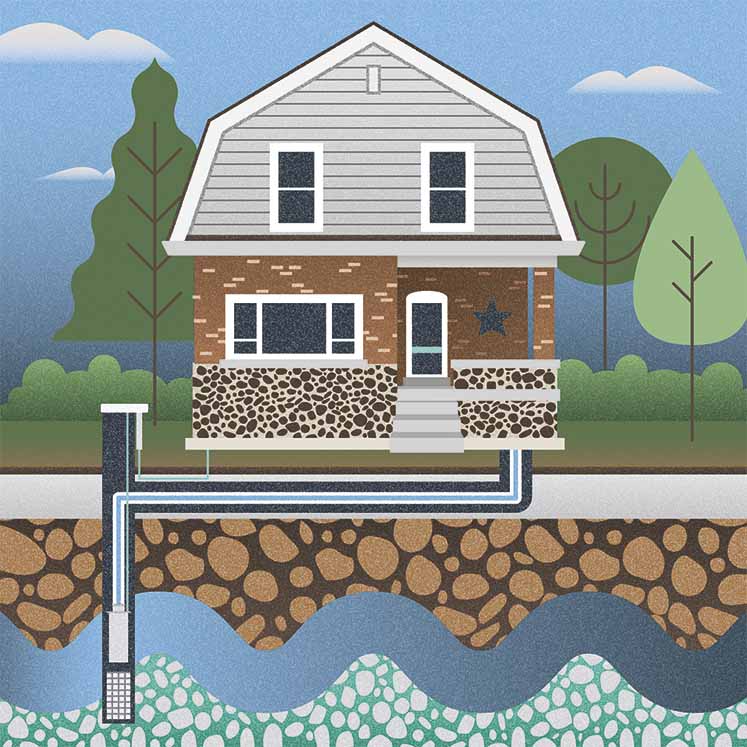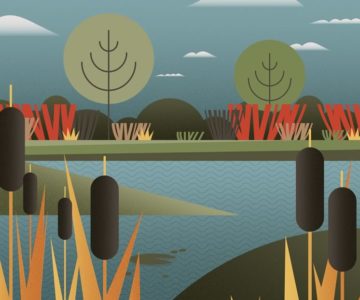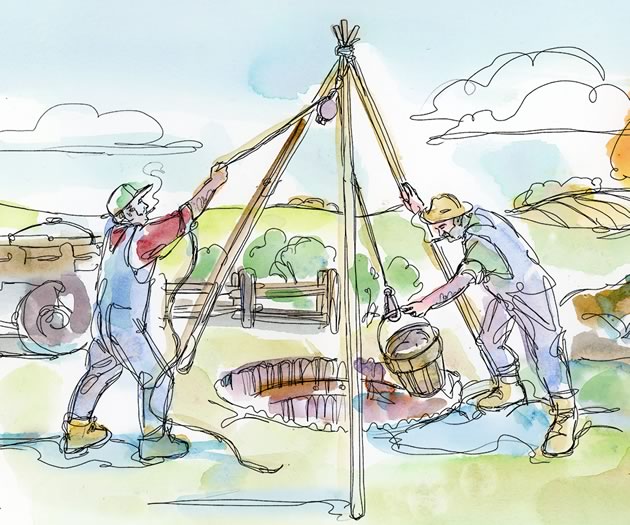Water Works
Rural life means getting your water from a well. But do you know how your system operates and how to keep it healthy?
For country dwellers, a safe and reliable source of fresh water is essential. For most this means a trouble-free well. Here’s a primer to help you understand the workings of your well and how you can ensure it functions smoothly.
How wells work
A well provides access to an aquifer, where water that has seeped down through the soil has been trapped by a layer of rock, clay or other impermeable material. To access this groundwater, a well is sunk into the ground and water is pumped to where it’s needed.
A casing protects against contaminants, and in most wells a strong, noncorrosive plastic pipe – PVC is the most popular material – is inserted to reach down to the aquifer. The well opening is capped at least 16 inches above ground to prevent debris from falling into the well.
A pump, usually located near the aquifer, moves the water through the pipe and into your home, where a pressure system is typically located in the basement. Turn on a faucet and the pressure forces the water out.
Well types: drilled, dug, bored or driven (sand point)
Today, about 80 per cent of wells in Headwaters are drilled, says Mono-based Bob Shirley, who has been a go-to water and well specialist in the area since 1958. Most of the remaining wells are bored with a large auger or dug with a backhoe, though he notes the techniques used to create bored and dug wells have changed over time. A well that would have been dug or bored by hand years ago is now usually created by machine. A fourth option also exists. A driven or sand point well is an alternative if the soil is sandy and the water table is near the surface.
Features such as soil conditions and underground formations determine the type of well on your property. A licensed professional has a working knowledge of the area you live in and what will work best. But the type of well doesn’t matter, says Shirley, “if you get into a good underground stream.”

Rural life means getting your water from a well. But do you know how your system operates and how to keep it healthy? Illustration by Ruth Ann Pearce.
Why wells fail
The reasons well systems malfunction can include pump failure and an increase in the volume of water drawn. If a family of six, for instance, moves into a home that formerly housed two people, the well system may struggle to keep up with the increased demand.
Shirley says a minimum flow rate of three gallons a minute is ideal. “You can live with two, but when you have three or more, this ensures enough water is being produced for your needs,” he explains. “If your pump is working too hard to keep up and get water that’s not there, it will burn out.”
Equipment fatigue is the number 1 issue, he adds. Sand and silt in your water mean your well pump is not up to the task. “The moment you see this, it’s time to call in a professional,” he says. “If you don’t fix this immediately, you are compromising your whole water system. This is the most inexpensive and important service call you can make. Maintain your system and you will have few problems.”
Keeping your well water safe
Water quality is the top reason to maintain your well – and bacteria are the most serious villains to watch for. Well-water testing routinely measures total coliform bacteria, most of which are not harmful to humans. But E. coli, short for Escherichia coliform, is a fecal coliform that can cause gastrointestinal problems and can even be deadly. It can invade if a well is improperly sealed or the cap is not watertight.
Septic systems can be a source of fecal contamination. A bored well, says Shirley, should be 100 feet away from your septic system, a drilled well 50 feet away.
Public Health Ontario recommends testing well water for bacteria three times a year, especially in the spring. The two public health agencies that serve Headwaters offer free well-water testing, though only for bacteria.
Other culprits that affect water quality are pH level and TDS, total dissolved solids: anything – organic and inorganic – dissolved in the water. Some TDS are harmless, but depending on levels, others may be harmful to human health or to the lifespan of your well system. For issues like these, a water professional can test and offer the best solution, such as a UV light, softener and ionizer.
The best advice? Keep a record of your well’s history – construction, testing, inspections and repairs. And be sure to keep the well head clear of debris and inspect your well regularly.
Related Stories

Happy Returns: Rural Tax Credits
Mar 29, 2022 | | Country Living 101As a country property owner you may be eligible to apply for one of three Ontario tax savings programs – and start your journey as a steward of the landscape.

Hard Work for Hard Water
Sep 16, 2016 | | Fence PostsWill it last through the family reunion this weekend? Should I have it tested? How do I explain delicately to the guests that long showers are not an option?










